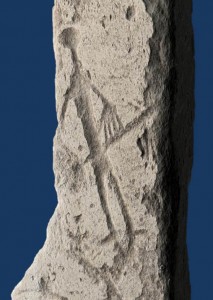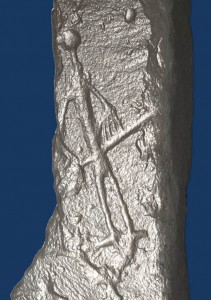RTI shedding new light on Iberian Late Bronze Age stelae
During the first two weeks of September David Wheatley and myself, jointly with Leonardo García Sanjuán (University of Seville), have conducted fieldwork in Lora del Río, Seville (Spain). This fieldwork has been aimed at providing enhanced contextual data and visual recording of a Late Bronze Age decorated stela.
As part of this work we have applied Reflectance Transformation Imaging (RTI) and the results are really amazing. RTI allows us to examine the surface of the stela interactively. It also reveals details of the surface that are not evident to the naked eye, not even with the aid of artificial grazing light. We can distinguish between the different techniques employed and identify the possible superimposition of motifs, in short, get at the processes of carving and sculpting, examine the skill of the craftsmen/women involved and explore the biography of this beautifully decorated stone.
The information that RTI provides is so detailed that we are now in the position to analyse prehistoric engravings from a technological and biographical point of view, something that no other technique has enabled ever before at such low cost and in a such user-friendly way. During fieldwork we have also laser scanned the stela and briefly we will be able to show you details of the high-resolution 3D model of it in this blog.


Fieldwork has also comprised the analysis of possible remains of polychromy on its surface, by Miguel Ángel Rogerio Candelera, the investigation of the provenance of the stone, in charge of José Antonio Lozano, both researchers of the Spanish National Research Council (CSIC), and the intensive surface survey of the site where the stela was found, which has benefited from the support of a highly motivated team of Master students from the University of Seville.
This research, which has produced exceptional results and will be soon published in an international journal, has been funded by the University of Southampton, the University of Seville and the Spanish Ministry of Education.
